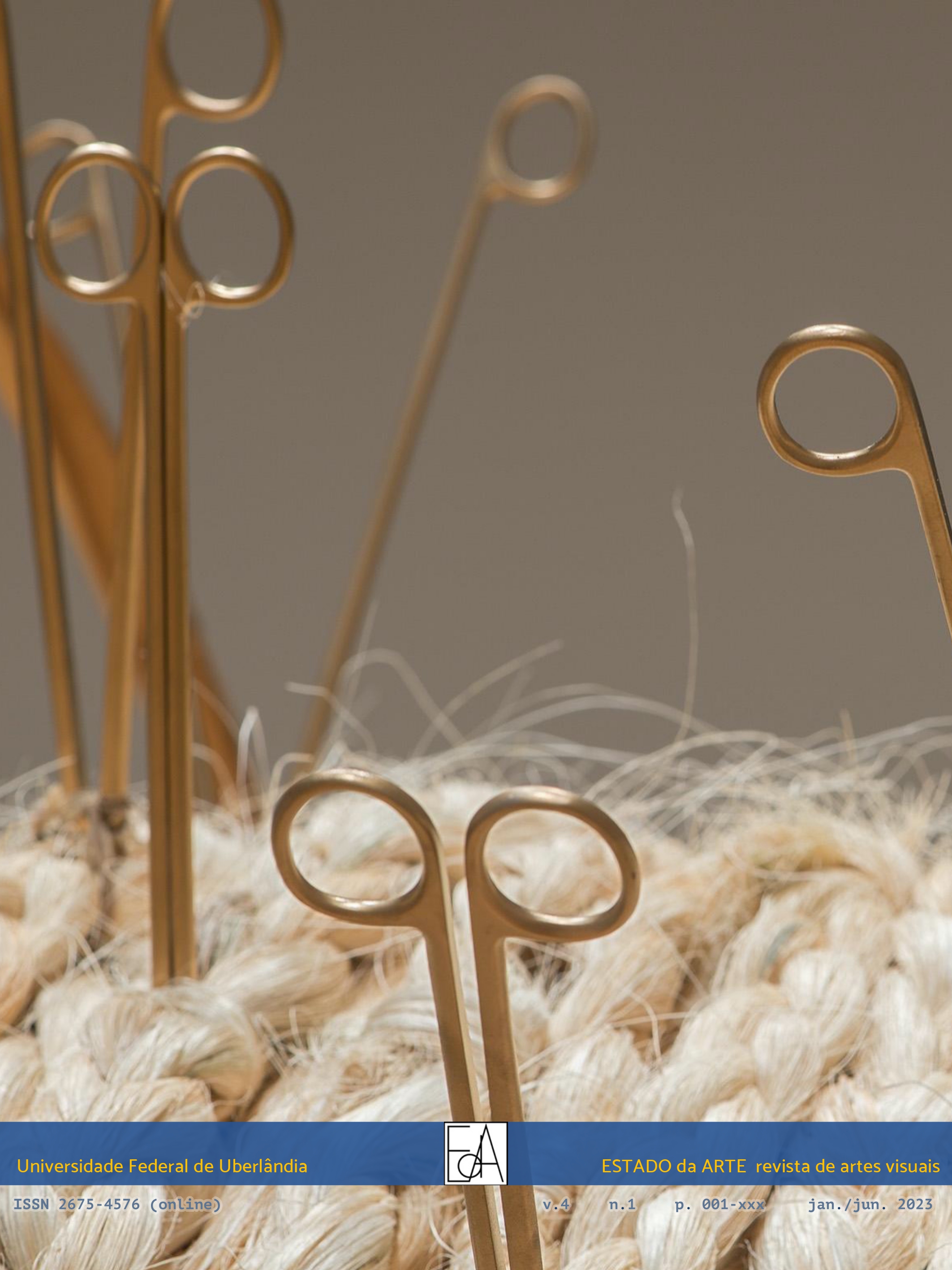Abstract
I display the triggering ideas of two transcreative approaches to the characters Penelope, from Homer's "Odyssey" (8th BC, approx.) and Marion/Molly Bloom, from James Joyce's "Ulysses" (1920). They culminated in an illustrated book, and in the elaboration of a three-dimensional poetic object. Both subvert the book as a narrative space-time, working its form through metalanguage and through its transformation into a meaningful body. In Retorno de Ulisses (Rocco, 2007), I recreated Penelope as a visual artist and fictional author of the illustrations that intertwine with the text of my own. In Penélope Bloom (2020), the well-known monologue by Leopold Bloom's wife is hand-transcribed from the English original, on 2600 meters of sheets of paper sewn together. This volume is compressed by the cover of an edition of Joyce's work, as if it was a corset. The mainly objective was to question the place of women in both narratives consecrated as part of the literary canon and the book as a cultural symbol of a patriarchal civilization.
References
CAMPBELL, Joseph. The hero with a thousand faces. Novato (EUA): New World, 2008.
CAMPOS, Haroldo de. Transcriação. TÁPIA, Marcelo; NÓBREGA, Thelma Médici (Orgs). São Paulo: Perspectiva, 2013.)
DERRIDA, Jacques. Gramatologia. São Paulo: Perspectiva, 2008.
DURAND, Gilbert. Estruturas antropológicas do imaginário. São Paulo: Martins Fontes, 2012.
HOMERO. Odisseia. Tradução de Donald Schüller. Porto Alegre: L&PM, 2007.
HOMERO. Odisseia. Tradução de Manuel Odorico Mendes. Edição de Antonio Medina Rodrigues. São Paulo: Edusp, 2000.
JOYCE, James. Ulysses. Portal Project Gutemberg (EUA), 1 de julho de 2003. Disponível em: https://www.gutemberg.org/ebooks/4300. Acesso em 31 de janeiro de 2022.
JOYCE, James. Ulysses. São Paulo: Penguin Classics, 2012.
MASTROBERTI, Paula. Livros impossíveis. Divulgação do projeto no Instagram. Disponível em: https://www.instagram.com/livros_impossiveis/. Acesso em 3 de fevereiro de 2022.
MASTROBERTI, Paula. O retorno de Ulisses. Rio de Janeiro: Rocco, 2007.
MASTROBERTI, Paula. Penélope Bloom (noturno). Videopoema sem título, 16 de fevereiro de 2021. Disponível no Canal You Tube da autora: https://youtu.be/j_kB23nYmSg. Acesso em 3 de fevereiro de 2022.
MASTROBERTI, Paula. Penélope Bloom: fiando e tecendo o texto de James Joyce. Video-documentário, agosto de 2020. Disponível no Canal You Tube da autora: https://youtu.be/j6Hoo-MoSf4. Acesso em 5 de fevereiro de 2022.
MASTROBERTI, Paula. Penélope Bloom: uma voz espartilhada. Video-documentário, 16 de setembro de 2020. Disponível no Canal You Tube da autora: https://youtu.be/JVEWowrO9O0. Acesso em 3 de fevereiro de 2022.
PINSKY, Carla B. e PEDRO, Joana M. Nova história das mulheres no Brasil. São Paulo: Contexto, 2013.
SCHILLER, Friedrich. A educação estética do homem. São Paulo: Iluminuras, 2017.
SCHULLER, Donald. Sobre "Retorno de Ulisses", de Paula Mastroberti. In: Jornal Zero Hora — Caderno da feira. Porto Alegre, quarta-feira, 31 de outubro de 2007, p. 3.
STEARNS, Peter N. História das relações de gênero. São Paulo: Contexto, 2007.
PENÉLOPE BLOOM. Livreto da peça teatral. Vários autores. Porto Alegre: Maria e Cia, 2008.
WARNER, Marina. From the beast to the blonde: on fairy tales and their tellers. New York: Farrar, Straus and Giroux, 1996.


